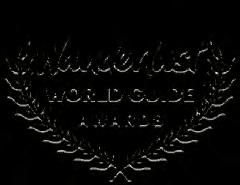UN COVER
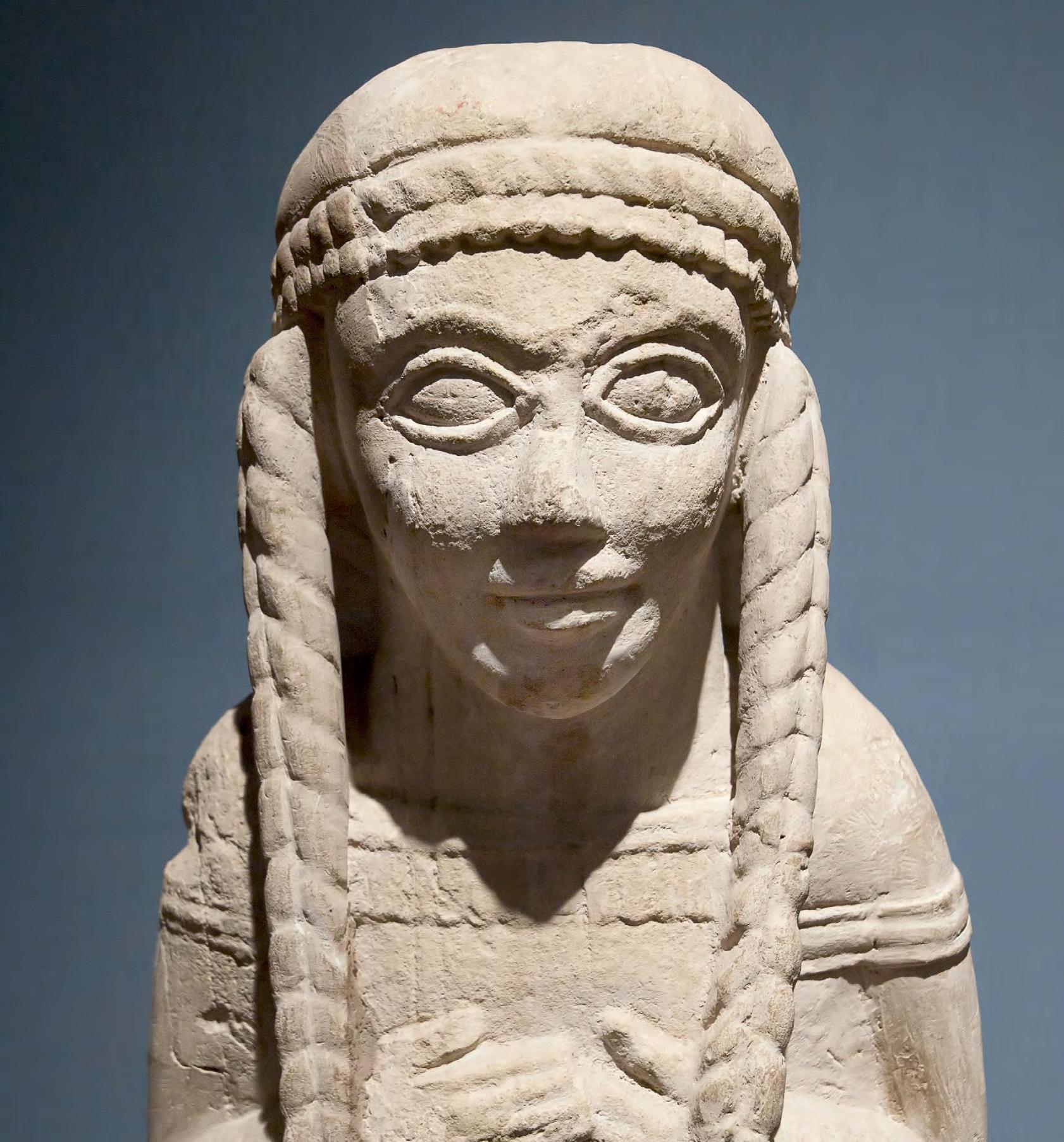
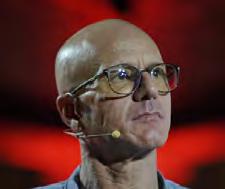

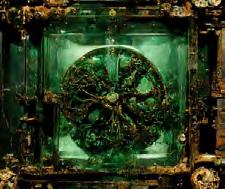







Whether you are a regular traveller with Andante Travels or only recently discovered our tours it is a pleasure to present to you a digital version of Issue 3 of our latest UNCOVER newsletter.
This newsletter is our opportunity to bring to you any latest news, exclusive interviews and articles focussed on the world of archaeology and history.
Our 3rd edition includes an in-depth interview with Director Francesco Sirano, an archaeologist who, until recently, was the Director of the Archaeological Park of Herculaneum and this summer, he was appointed the new Director of the MANN, the Naples Archaeological Museum.
Thomas Abbott who joined our team of expert Guide Lecturers last year shares his ‘favourites’ in this edition, and we are delighted that Mike Smith, a regular traveller with us has shared his memories and passion for travel in our Guest Insight.
Along with our regular features including Did you Know?, recommended books to read and a podcast, we hope there is something for everyone to enjoy reading in this issue and please do share your feedback to help us shape and curate future editions.
If you have not yet read issues 1 & 2 of our UNCOVER newsletter they are available to view and download via our website.
Kate Winter
EDITOR
kate@specialistjourneys.com
CONTRIBUTORS
FEATURES, ARTICLES AND INTERVIEWS: Director Francesco Sirano, Dr Eireann Marshall, Thomas Abbott, Mary Reynolds and Mike Smith.
DESIGN: Alex Gale


NEW TOURS FOR 2026
If you have not done so already then take a look below at some of our 42 new tours, all of which come with carefully crafted itineraries designed to inspire, inform and delight. To see our full range of tours you can visit our website or order a copy of one of our latest brochures via our website.
Ravenna – 12th March & 8th October
• Ioannina – 21st April & 1st September
• Rock Art & Human Origins – 11th May
• Cruising Malta, Sicily & Campania – 10th July
• The Isle of Wight – 13th July
• Viking Homelands – 14th July
• China – 2nd September
• A Grand Tour of Roman Britain – 7th September
• Aegean Odyssey Cruise – 22nd October
INTRODUCING OUR ESSENTIAL AND RELAXED ARCHAEOLOGY COLLECTIONS FOR 2026
Our new Essential tours; Etruscans, Verona, Carthage, Athens and Rome combine expert guidance with the freedom to explore interesting ancient locations at your own pace. On an Andante Essential tour we take care of all the necessary planning so that you can concentrate on the most important detail: what you want to see!
Travelling to Split, Kyrenia, Nice, Trier and Syracuse our Relaxed tours are designed for those who prefer to discover the past at a gentler pace. With carefully planned itineraries, we balance expert-led visits with more leisure time, so you can truly savour each destination with the ease of a lighter daily itinerary.
We are delighted to welcome the following experts leading Andante Travels tours in the future.

Dr Peter Brown
Peter is an archaeologist specialising in the medieval world across Europe and Eurasia. He has worked on, and directed, a wide variety of archaeological field projects across the Middle East, Central Asia and China.
Join Peter on tour: Uzbekistan 28th March and Kazakhstan 26th September
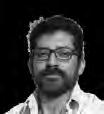
Dr Luis A. Muro Ynoñán
Luis is a Peruvian anthropological archaeologist specialising in the archaeology and heritage of the Moche. He is currently Assistant Curator of South American Anthropology at the Field Museum of Natural History in Chicago and a Lecturer in Archaeology at the Pontifical Catholic University of Peru in Lima.
Join Luis on tour: Peru 6th September

Ken Murphy
Ken Murphy is a field archaeologist with over 45 years of experience. He has worked on numerous field and desk-based projects since 1979, including large-scale excavation of prehistoric and later sites, topographic survey of sites of all periods and landscape analysis of large parts of southwest Wales.
Join Ken on tour: Archaeology & Wildlife of the Pembrokeshure Coast 20th May and The Archaeology of Anglesey 25th May


Michael King
Michael is a museum professional with over 30 years’ experience, and he is an expert guide in Irish archaeology and the early medieval culture of Britain and Ireland.
Join Michael on tour: Megaliths of England & Ireland – 31st August (part in Ireland)



Recent excavations in Pompeii’s Insula Meridionalis have overturned the long-standing assumption that the city lay permanently abandoned after Vesuvius’ infamous eruption in AD 79. Coins, early Christian objects, such as Chi-Rho oil lamps, and even the burial of a newborn dated to the 2nd century AD, have allowed archaeologists to identify two distinct phases of reoccupation: the first stretching from the late first to early third centuries AD; and the second extending into the fourth and mid-fifth centuries. These findings demonstrate that Pompeii retained a modest but persistent human presence for centuries beyond its supposed demise.
The material record reveals how life was reshaped among the ruins. Buildings once packed with ash were partially cleared and reused: upper stories provided these new inhabitants with living quarters; while the lower levels, mostly buried in volcanic debris, were converted into storage rooms and even working spaces. Archaeologists even uncovered a repurposed cistern which contained a bread oven. These reinhabited areas of the city, however, lacked the infrastructure of Pompeii’s earlier urban life: without running water or a working sewage system, these settlements were more like an ad-hoc reuse of ruins than a reincarnated Pompeii.
Most likely, it was poorer locals who, in search of shelter, repurposed this city to their needs. Nonetheless, these discoveries compel us to rethink Pompeii’s fate: far from being extinguished by Vesuvius in a single day, the city endured as a precarious, improvised community at the heart of one of the empire’s most densely populated areas.
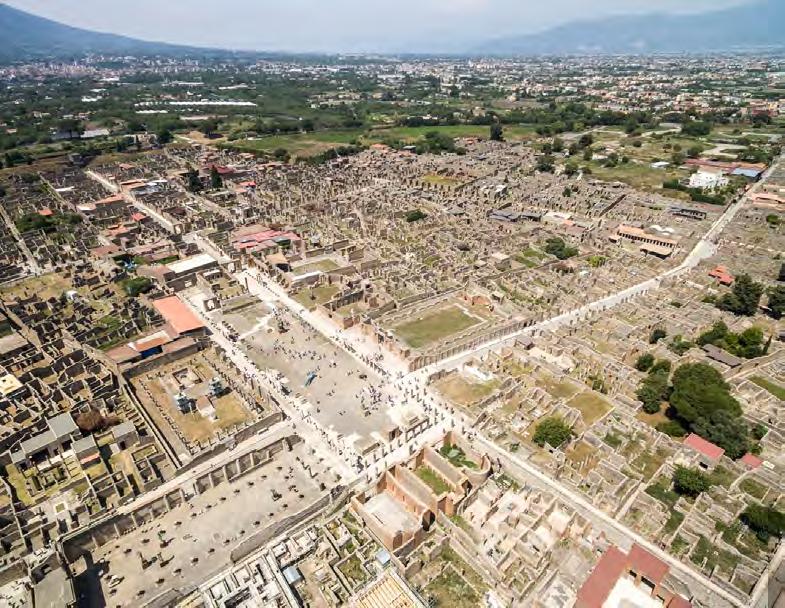
“Pompeii retained a modest but persistent human presence for centuries beyond its supposed demise.”

Archaeologists working near the city of Bulqiza, in northern Albania, have just unearthed a remarkable, Roman mausoleum dating to the 3rd or 4th centuries AD. The size and opulence of the tomb make this an exceptional find in Albania. Excavations, carried out in August of this year, have revealed a large underground structure, carved out of the local limestone; the finely carved details, including the roof stone, indicate that the deceased was a member of the elite class. This is confirmed by some of the grave goods found in the tomb, which include precious fragments of a cloth which was interlaced with gold, as well as knives and glass plates. The tomb, which is far grander than other burials in the region, also contains an inscription which reveals the names of the dead: written in Greek, the epigraph names the buried person as Gelliano, a name typical of the Roman period. Another inscription records a dedication to the god Jupiter, a member of the Roman pantheon. The monumentality and opulence of the tomb underlines how prosperous Albania was in antiquity.
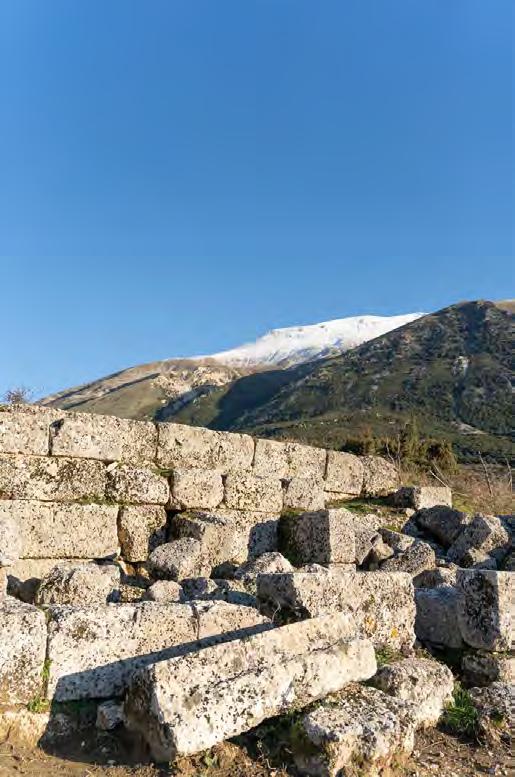
A team of archaeologists from an array of different universities and disciplines have uncovered startling new evidence that the British economy didn’t collapse after the withdrawal of the Roman army in AD 410 as has been commonly thought. The study focused on analysing the metal pollutants in a sediment core taken from an old channel of the River Ure, which ran through the Roman town of Isurium Brigantum, located on the margins of the Yorkshire Dales. Isurium Brigantum (Aldborough) was the civitas of the Brigantes and was a hugely important metal producing centre, as well as being a bustling trading centre from the end of the 1st century AD. In the article published by Cambridge University, scholars have argued that lead and iron continued to be produced in Isurium in the 5th century AD, even though it stopped exporting lead to the Roman army in the Rhine. After a slight decline in metal production in the early 5th century, there was a sustained rise in production in the later parts of the 5th century and early 6th century AD, after which there was a decline because of the devastating Justinianic plague. As the economy persevered, it is not a surprise that archaeological evidence suggests that Isurium continued to thrive in the 5th century, with parts of it even being replanned. This study completely challenges the long-held view that Britannia collapsed after the Rescript of Honorius of AD 410, when the province was left to its own devices. It seems clear that economic activities carried on and that some cities continued to thrive.

For the first time, scientists have uncovered direct genomic evidence that the Plague of Justinian, often described as the world’s first recorded pandemic, was caused by Yersinia Pestis, the deadly bacterium behind the infamous Black Death. The Justinianic Plague began in AD 541 and struck in waves for more than two hundred years, until around AD 750. It crippled the Eastern Empire at its height, wiping out between one-third and one-half of its population. It is believed that the plague killed 25-50 million people; in the first outbreak alone, it is said to have been responsible for the deaths of half the empire. Such catastrophic losses brought not only labour shortages, but a collapse in agricultural production and a steep decline in tax revenues.
The breakthrough evidence comes from Jerash, an ancient city in modern-day Jordan, roughly 200 miles away from Pelusium, where the plague was first reported. Beneath a Roman hippodrome, archaeologists uncovered a mass grave created during a sudden mortality crisis. DNA taken from the teeth of several victims revealed nearly identical strains Yersinia Pestis. This discovery provides the long-sought definitive proof that the Justinianic Plague was caused by the same bacterium which caused the pneumonic and bubonic plagues known as Black Death. A companion genomic study showed that bubonic plague pandemics were not caused by a single strain but erupted repeatedly from deep-rooted animal reservoirs across Eurasia. Unlike COVID-19, which originated from a single spillover, plague has haunted humanity again and again.
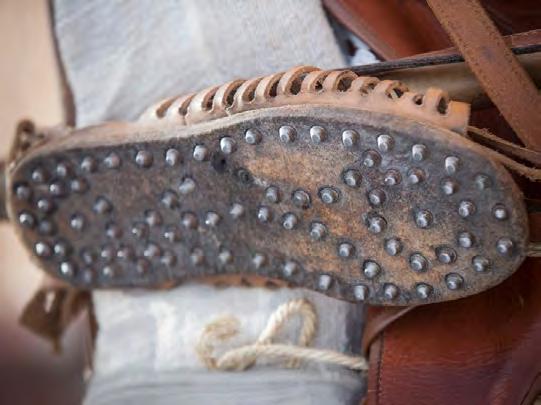
A recent excavation at the Roman castellum of Schramberg-Waldmossingen has revealed the remains of a 1st century AD fabrica, a workshop, that specialised in the production and distribution of iron nails for the legionary sandal, the iconic caliga. The excavation, carried out last August, brought archaeologists and students from across Germany and was focused on a large stone building that had first been identified by the Imperial Limes Commission in 1896. The building, roughly 20 by 50 metres, had been an enigma for decades as it had no other parallel in the region. Employing stratigraphic precision, this new campaign was able to reveal at least two construction phases over fifty years of occupation. Most interestingly, however, the investigation recovered over one hundred iron nails, less than two centimetres in size. These were easily recognisable as the hobnails of caligae and were in mint condition.
Whether produced on site or stockpiled in bulk, the nails point to the castellum as some sort of logistical hub which supplied the surrounding forts and the nearby legion at Ara Flaviae (modern-day Rottweil). The importance of such nails was well established: legionaries even received an allowance, the clavarium, which was intended for the acquisition of replacement nails. This discovery suggests that the building was not merely a workshop, but part of a larger system that supplied various outposts throughout the frontier region.

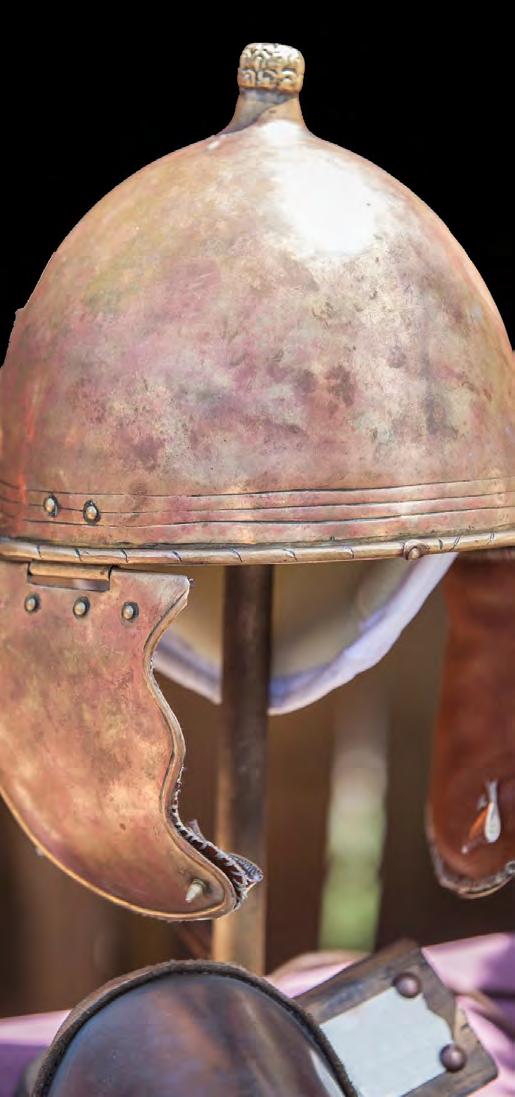
Divers off the coast of the Aegadian Islands in Sicily have recovered a number of weapons from the seabed which were used during the decisive battle of the First Punic War in 241 BCE. Alongside swords, spears and javelins, archaeologists recovered a helmet of the Montefortino type (the preferred helmet-type of the Roman military from the 4th century until the 1st century AD). What is remarkable about the helmet is its state of preservation: most of the individual elements, including its cheek guards, were discovered intact. The unspoiled nature of the finds has the poignant effect of bringing this famous battle back to life. It was the final, and decisive, clash of the First Punic War: Rome’s fleet, under the command of Gaius Lutatius Catulus, defeated the Carthaginian navy commanded by Hanno. After more than two decades at war, this battle determined the balance of power in the western Mediterranean, resulting in Rome acquiring Sicily and, with it, its first province. It was Rome’s first step towards becoming the Mediterranean superpower. Whilst previous archaeologists found other materials from this battle, including the famous Liburnian ship, housed in the Baglio Anselmi museum in Marsala, this fantastically preserved helmet has the effect of bringing us face to face with that extraordinary moment in history when the future not only of Rome but of the world to come took shape.
Archaeologists from the Australian National University have just discovered evidence of communal feasting at a 10th millennium site called Asiab, in the Zagros Mountains of Western Iran. A building on the site included a pit which preserved the skulls of 19 wild boars that bore the marks of butchering. What is interesting is that the skulls were neatly packed and sealed, rather than being discarded. From this, it seems apparent that the animals were consumed as part of an important feast. Scientists have recently identified the origins of some of the boars on the basis of their tooth enamel whose geochemical composition place them some 70 kilometres away from Asiab, over a difficult, mountainous landscape. The effort needed to transport these boars and the sheer distance travelled, suggests that the feast brought diverse groups of people together for a joint banquet. As boars weren’t the most common prey but are known for their aggression, it is possible that they were seen as trophy animals. The site was inhabited during the Early Neolithic before its inhabitants had settled down permanently to practice agriculture. One could postulate that the dangers of hunting, which was at the heart of their survival, brought people together. Evidence suggests that the joint feast was important and that food was central to cementing bonds between outside groups, as it is now. What we can’t know is whether the banquet was in some kind of way religious.


Saturday 28th February 2026 - UCL Institute of Education, London
Current Archaeology Live! 2026 is a one-day conference bringing you all the latest archaeological discoveries and hear the latest news regarding leading research projects from Britain and beyond. There will be an exciting line-up of expert speakers covering the archaeological spectrum from prehistory to the present day. No matter what your background is – whether you’re a professional archaeologist, a student, an armchair enthusiast, or simply someone with a passion for the past – every year the organisers make sure the talks are accessible for all.
Once again, Andante Travels is proud to sponsor the Archaeologist of the Year Award, voted for by the public – and we will also be exhibiting at the event, should you wish to stop by and speak with a member of our team. While the final programme is yet to be announced, you can visit archaeology.co.uk/live to explore highlights from this year’s event and see what may be in store.
TICKETS ARE AVAILABLE NOW, AND IF YOU'RE SUBSCRIBED TO OUR DIGITAL NEWSLETTERS, YOU'LL BE ENTERED INTO A DRAW THIS NOVEMBER TO WIN A COMPLIMENTARY TICKET.
Francesco Sirano is an archaeologist working for the Italian Ministry of Heritage and Cultural activities, who, until recently, was the Director of the Archaeological Park of Herculaneum. This summer, he was appointed the new Director of the MANN, the Naples Archaeological Museum. As an academic, his main area of research is the study of image and material culture in the Greco-Roman world. He has published widely on his many excavations, including Kos, Teano, Capua and, more latterly, on Herculaneum. In more recent years, he has particularly focused on his native Campania. In his former position at Herculaneum, he was instrumental in opening the Antiquarium, a project that had been in the making for forty-four years. His dedication to the ancient world is remarkable, and he has spent many years trying to bridge the gap between the ancient and the modern, including trying to integrate Herculaneum into its modern surroundings.
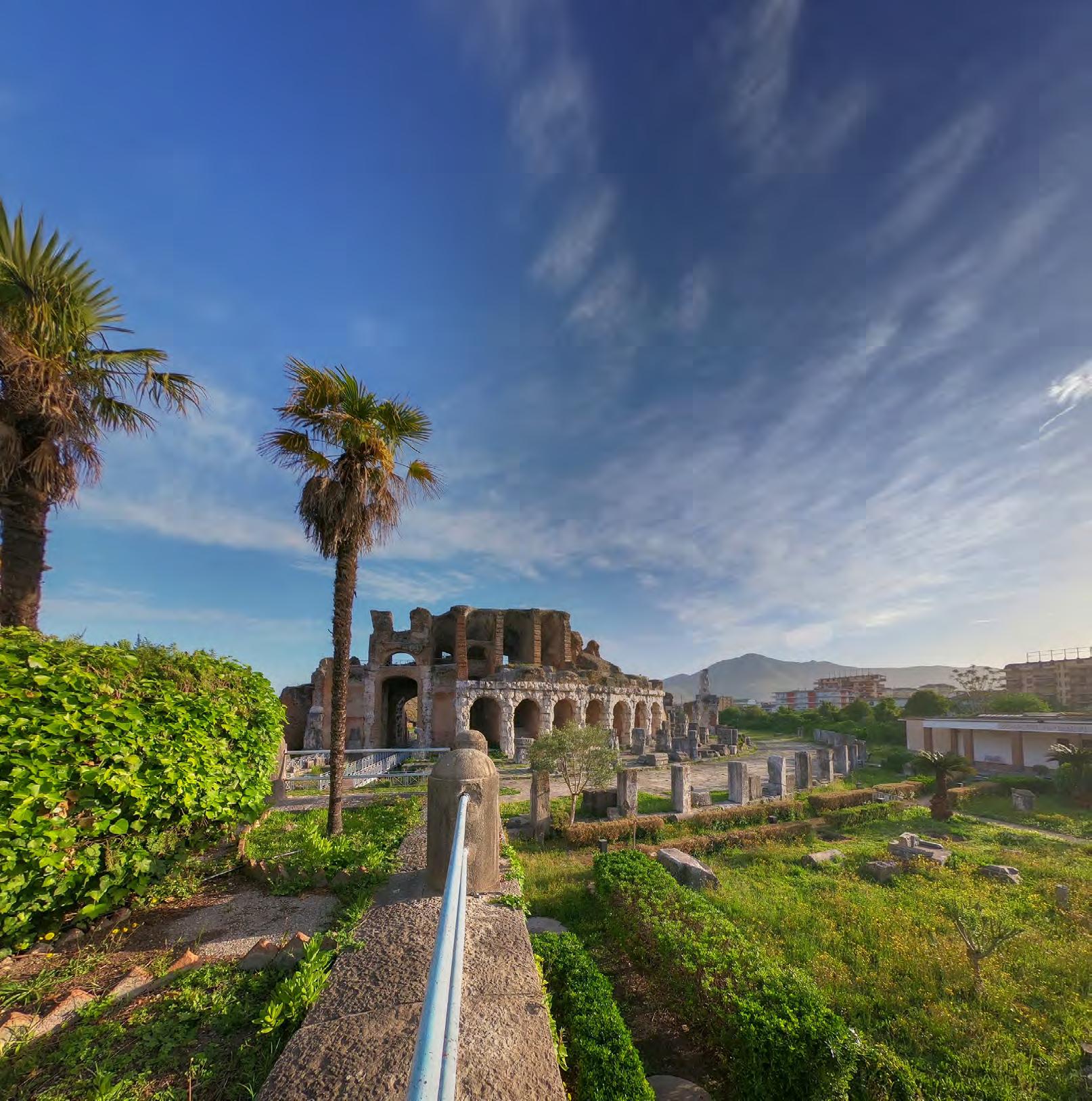
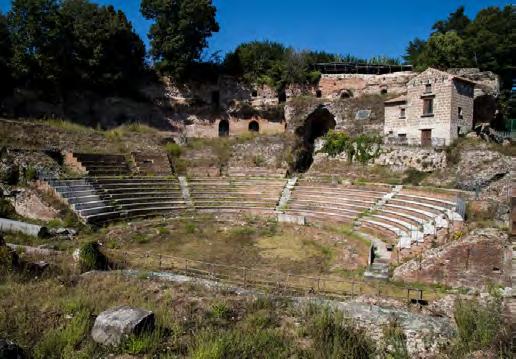

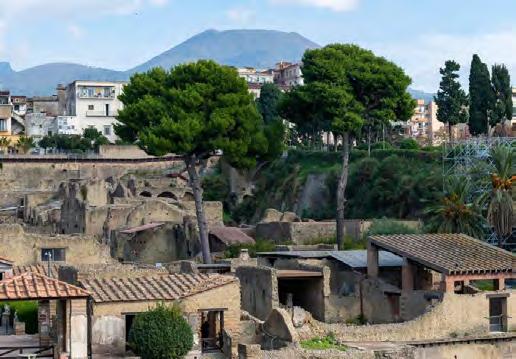

Who are some of the academics who have most influenced you?
I have been influenced by a number of scholars from all over Europe. The great scholar Fausto Levi inspired me to be curious and to think outside the box, while remaining rigorous. Just to show you how I am rather untraditional, I also cite my first site director, the great Jean Paul LeBihan, a visionary who was the first to publish an excavation report with three dimensional photographs. I have also been inspired by the exceptional Charis Kantzia, the director of the Kos excavations, who taught me a lot about the conservation of heritage and inspired me about the house I studied there. Also influential to me were Antonino di Vita and Emanuele Greco, both Directors of the Italian School at Athens, whom I met when I carried out post-doctoral research in the 1990s. Finally, I would like to remember two English scholars who have been very helpful to me, namely Andrew Wallace-Hadrill, a personal friend who gave me a lot of very helpful guidance and Richard Hodges, erstwhile President of the American University of Rome. I have had influences from all over the world and have learned different kinds of methodologies.
What are some of the most important moments of your career? In 1999, I became a state archaeologist in Naples and Caserta and focused on the sites of Allifae, Santa Maria Capua Vetere and Teano. Following this, in 2008, I participated in the ICCROM (The International Centre for the Study of the Preservation and Restoration of Cultural Property) in Herculaneum about Heritage Management, an area I knew nothing about at the time. In terms of directing archaeological sites, my work in Santa Maria Capua Vetere (ancient Capua) between 2011-2014 was key; it was here that I became a real war machine so to speak. It’s hard to fathom but in these three years, the team I directed discovered no less than 50 new archaeological sites. Then, in 2015, Massimo Osanna invited me to join the Great Pompeii Project when my ideas about how to lead projects rigorously and reach goals within set deadlines came to fruition. Becoming director of Herculaneum shortly thereafter was clearly an important milestone in my career, which occurred at an important moment in the site’s history.
What's the most remarkably preserved artefact or structure you've personally uncovered?
I have to admit to being more in love with sites than with particular artefacts because I am interested in considering how people have lived. For this reason, the small Campanian sites of Teano and Presenzano are wonderful to me because they bring antiquity to life. However, some objects I discovered are remarkable, including a bronze poppy shaped filter used for hallucinatory drinks which I unearthed in a 4th century BCE tomb outside of Teano. In 2016, I discovered a beautiful ivory fan made up of individual slats in the necropolis of Cumae, which I confess I have yet to publish. I also unearthed an interesting vase in Presenzano which depicts Oedipus answering the Sphinx’s riddle in a style which is entirely unique; it is a local variation of Etruscan pottery. I think we all too easily categorise objects as Etruscan or Greek, paying too little attention to local variations of cultures. Perhaps no artefact is dearer to me than the statue of Juno Populonia, which I found in a sacred deposit near a 3rd century sanctuary; the delicate treatment of facial features and lips are incredible.
What areas of Herculaneum do you think hold the most promise for future excavation?
This is a very interesting question because we have just completed core sampling of the southwestern part of Herculaneum, where the ticket office is located, in preparation for the largest scale excavations to take place since the days of Maiuri in the 1920s– all due to the funding made available by the Packard Humanities Institute. Initial findings indicate that there are very well preserved, two-storey buildings which haven’t been damaged by later Bourbonic exploration tunnels. Digging should begin in 2026, starting with the removal of the top stratum of earth. There is no way to overstate the importance of these excavations, which will continue for the next 40 to 50 years and will totally transform the site and our understanding of the Roman world. Because of the meticulous way in which we excavate today, the excavation will take decades, rather than the 3 years that Maiuri took. We will find buildings whose walls are in a state of collapse and are only being supported by the pyroclastic flow; it will take a monumental effort to underpin them. Although we are much more systematic and careful today, what Maiuri did was exceptional in ensuring the buildings are erect today. Our work will be different as archaeology has evolved, our sensibilities have changed, and engineering has improved; it will really be an important undertaking.
How has the field of archaeology changed in the course of your career? Archaeology has changed enormously since I began. Methodologies and the interdisciplinary approaches have improved the field, as have technologies which allow us to record digs digitally, making it much more efficient. Very shortly, we will be able to have 3D documentation of excavations. On the downside, scholars have become too specialized. There are a growing number of archaeologists who aren’t versed in Classical languages and ancient history. As a result, they are increasingly less able to put the artefacts objects they unearth into a larger context, leaving interpretation to historians. They dig, analyse and record objects meticulously but aren’t able to put them into a historical framework. The archaeologists of old, trained in languages and history, were better able to construct mini histories of the objects they unearthed which were then placed in a larger narrative. Herculaneum provides an example of the link between archaeology and history, in that it verifies aspects of Pliny the Younger’s Vesuvian letters, in particular, Pliny the Elder’s attempt to rescue victims with the navy. The boat that was discovered on the Herculaneum waterfront was a military vessel and not far from it, archaeologists found the remains of a sailor who was a faber navalis (carpenter) who was carrying tools in his backpack.
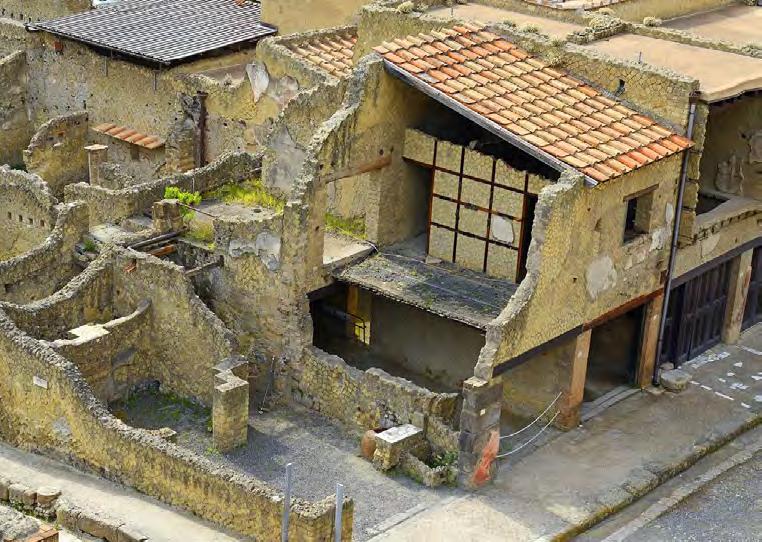
How do you balance excavation with conservation needs at such a fragile site?
What's process do you use when you discover human remains or particularly fragile organic materials?
Given the nature of the AD 79 eruption, we have to be incredibly precise when we unearth human remains in Herculaneum. In other sites, the bodies we find have been buried according to traditional rites and the focus of the studies is on the burial customs. In contrast, the bodies found in the Vesuvian sites are victims felled in a specific moment, so every detail is crucial as we are recreating the last moments of someone’s life. As you can imagine, it is a very emotional experience. We have to follow a very strict methodology using photogrammetry and high-resolution lasers which identifies and preserves for future records each layer and each smallest detail. It is also incredibly important not to contaminate excavation areas which would compromise DNA studies. This is all the more difficult because of the amount of work entailed in removing skeletons, above the careful recording of each bone. In order to study human and other organic remains, we remove a whole patch of terrain and complete the excavation in the laboratory, later collating these finds with those made in the area the terrain was taken from. We used these methodologies in our 2021 discovery of the individual we have called the last fugitive who was found some way away from the other 300 odd bodies discovered in the Herculaneum warehouses. This victim was unearthed in what was the sea, with his head looking up and tightly clutching a bag which had a wooden case containing money and jewels. In order to study the remains, we removed the tract of earth on which he and the bag were found and studied the remains. These included wax tablets found near the bag, which are being examined as we speak. We hope that the tablets can reveal the fugitive’s writing – as the wax on which he wrote would have melted in the eruption, it all depends on whether he wrote with a firm hand.
There is no need for compromise when it comes to the actual excavations as archaeology and conservation go hand in hand. When it comes to managing the site, however, we need to make a lot of compromises in that the excavated area is constantly being compromised by exposure to weather and by the hundreds of thousands of tourists visiting it. To this end, we have a very tightly organized programme of day-today maintenance, as well as urgent maintenance. These maintenance works are carried out quarter by quarter because we view Herculaneum as a city, not as a collection of individual houses. We take a global approach, in which we oversee both the ancient buildings and decorations and the modern additions, such as the protective roofs and gates. All of these works, including the electrical installations, are paid for by the archaeological park’s entrance fees. What’s more is that we are also able to fund smaller sites, such as Teano, with the funds coming in from ticket sales. It’s important to keep the smaller sites open.
You have just been made the Director of the Naples Archaeological Museum, what changes can we expect to see?
The museum itself is historic and shouldn’t be changed. The exciting news is that the archaeological museum is going to open a new site in Piazza Carlo III, a more deprived area of Naples. We are hoping the museum can be better integrated within the city and can help it to develop economically. The Second Naples Archaeological Museum will be located in the immense Albergo dei Poveri and will include a section on the history of excavations of the Vesuvian sites. We need to go beyond the one page of history that the volcano has given us, the AD 79 eruption, and to consider the remains from other eruptions, such as that from the Bronze Age. More than history, Vesuvius has made us who we are. It has made us friendly and has given us an appetite for food and life! I live in Portici right underneath Vesuvius and am often asked how I can sleep at night, and I answer by saying we are children of Vesuvius who has given us an appreciation for every day that we live.
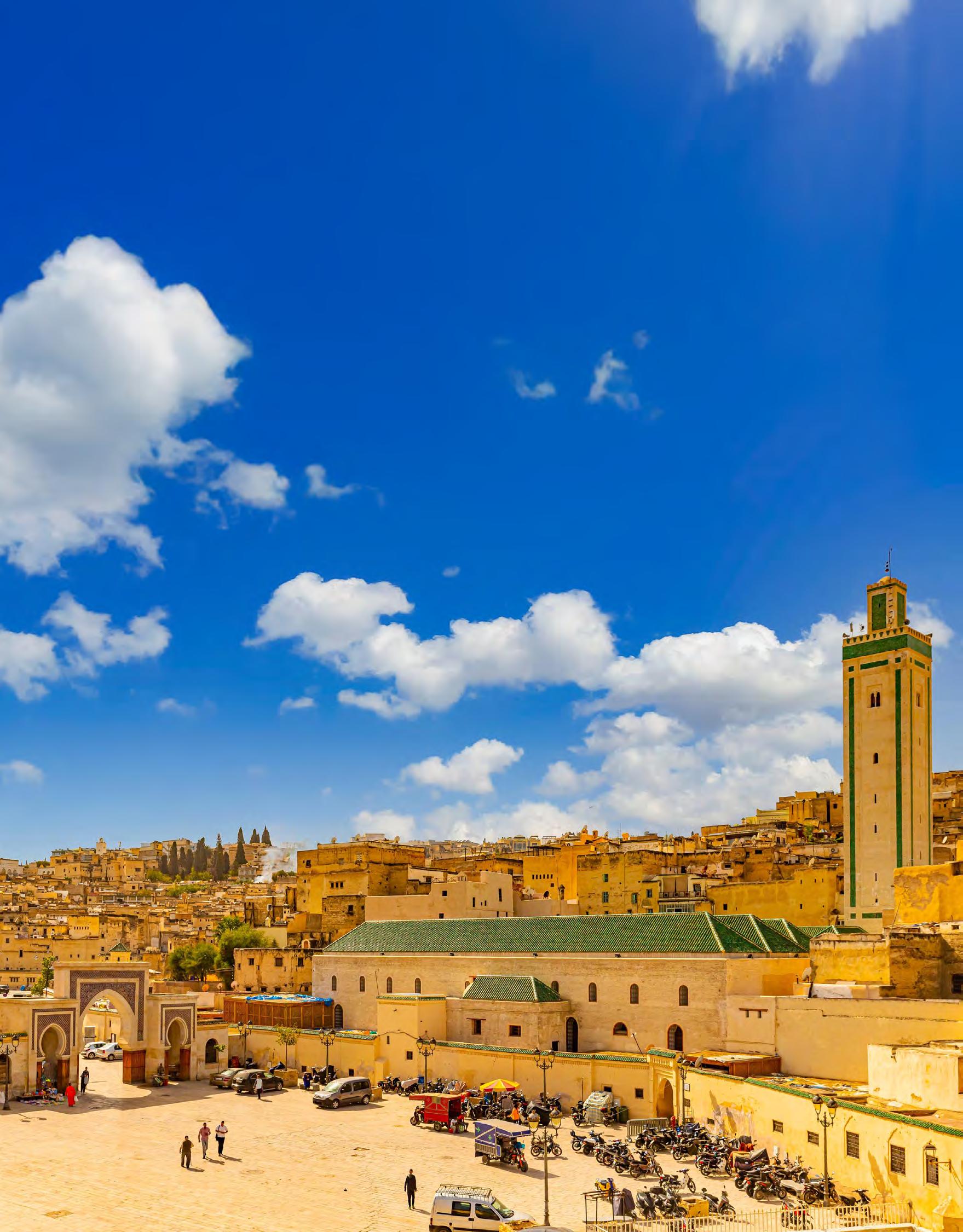
The first glimpse you should get of the wonderful city of Fez is from the crumbling 14th century Tombs of the Marinid kings overlooking the old part of the city. It is from here that you can fully grasp the overwhelming size of the historic city which boasts a population of around 100,000. Thought to be one of the largest medieval medinas (old towns) in the world today, it is a heady mixture of mosques, madrasas and endless, labyrinthine streets.

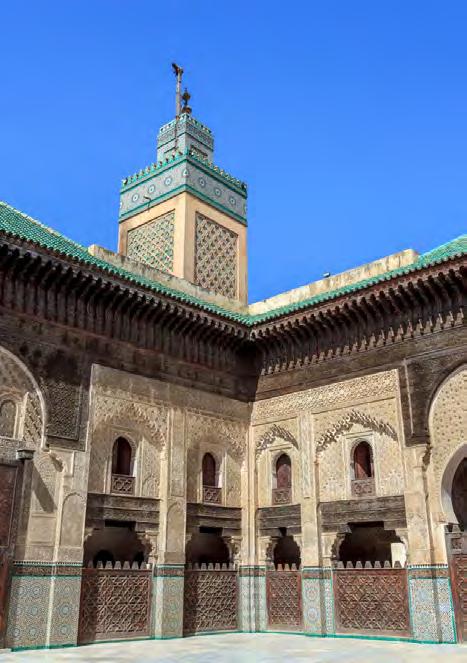
Walking through the Medina of Fez is like taking a step back in time to an unfamiliar part of the world. It is a welcome challenge to your senses. You encounter donkeys collecting household rubbish, as well as other donkeys bearing improbably large loads. It is also alive with the sounds of a myriad of craftsmen forging goods which have made it famous for centuries. It is the largest pedestrianized urban area in the world making a visit to the medina fully immersive. Beyond this colourful spectacle, the city reveals its long and important history.
Fez was established in the late 8th century during Morocco’s first dynasty, when two separate settlements were established on either side of the River Fez (Madinat Fas and Madinat Al-'Aliya) by Idris I and his son Idris II, respectively. Together these quarters made up the first city to rule all of Morocco. The bulk of the settlement comprised local Amazigh, though it quickly accommodated Andalusians and Tunisians who were escaping political turmoil. No buildings from this earliest period survive intact, though the body of Idris II is laid to rest in the impressive Zawiya of Moulay Idris II, largely rebuilt in the 18th century.
It is in this early period that Al Qarawiyyin was founded. This world-renowned mosque and centre of learning lays claim to being the oldest university in the world; legend has it that it was founded in 857 by Fatima al Fihri, though it is more likely to have been established by Dawud, the son of Idris II. It specialized in teaching Arabic grammar and fiqh or Islamic law, though other subjects, including mathematics and astronomy, were offered during its heyday. It was an important centre of learning, particularly in the 13-14th century, during the Islamic golden age, and boasts alumni as celebrated as the Andalusian Jewish philosopher, Maimonides, and Leo Africanus, who wrote an important account of African geography.
Fez continued to thrive under the Almoravid dynasty in the 11th century, even though the newly founded Marrakesh became the new royal capital. It was under the Almoravids that the two parts of the medina, Madinat Fas and Madinat Al-'Aliya, were brought closer together. Fez continued to be a religious, cultural and commercial centre, boasting a population of 200,000 people, which made it one of the largest medieval cities in the world.
The layout of the medina today owes much to this period, with its 9,000 odd alleys which comprise a mixture of souks, mosques, hammam (baths), funduqs (inns) and madrasas. Despite the overwhelming sense of chaos, there is an ancient organization to it, with different parts of the medina being divided into different shopping areas, or souks. There are the Nejjarine, selling wood products, the vibrant henna area, the Ain Allou souk, which produces a plethora of leather goods, and, finally, the colourful Attarine souk, where there are beautifully displayed spices. The sections are all brought to life by craftsmen sitting on benches producing their goods according to age-old traditions.
The smelliest part of the medina belongs to the tanneries, among which the oldest tannery is the 12th century Sidi Moussa and the most famous tannery is the Chouara. Here, men have the unenviable task of softening hides in large stone vats containing a mixture of substances, including bovine urine, quick lime and pigeon guano. After soaking in these insalubrious mixtures for several days, the hides are then put in vats containing dyes made from natural pigments, including poppy (red), henna (orange) and indigo.
During its heyday, Fez could boast 86 tanneries, producing leather items which were exported all over the Muslim world, notably Baghdad. It is hardly surprising that Fez souks today also make a determined effort to sell the eponymous brimless, tasselled hats made famous by Ottomans (and Tommy Cooper). It should be said, though, that the fez hat was so named because of its characteristic red dye, which was originally only produced in Fez, rather than because the hat originally came from here.
Fez has been the beating heart of Moroccan commerce since its very inception, and nothing emphasizes this more than the evocative funduqs dotted throughout the medina. These acted as a combination of inns, storehouses and sale points and were important centres of cultural exchange, connecting Fez with cities throughout the Mediterranean. It is estimated that there were originally some 270 funduqs, though today only 10 have been restored. The most famous among these are the Sagha Funduq, a goldsmithing centre, and the Nejjarine Funduq, which has been painstakingly brought back to life and is the Museum of Wood Arts and Crafts. Built in the 18th century, its elaborate façade gives way to a central courtyard which is dominated by a massive scale once used to weigh goods sold there. Right around the corner from this funduq is a fountain, or saqayya, which provided water for the neighbourhood. These fountains found throughout the Medina are richly decorated with zellij tiles and are fed by Fez’ centuries’ old water supply system. Not enough is made of the staggering engineering which went into providing the medinas’ many mosques, water clocks, hammam and fountains with water. This was done by using large water wheels to lift water from the river into innumerable water channels dug underneath the streets of the old city.
Nestled amongst these various commercial ventures are a plethora of mosques and madrasas for which the city is justly famous. Many of these were founded in the 13th and 14th centuries, during the Marinid period, when the city was at its height of importance. In an effort to consolidate their power, the Marinid rulers moved their capital to Fez and established a new part of the medina, the Fez al Jdid, where they built an imposing royal residence and administrative centre, as well as the Great Mosque, one of the most important in the city. It is also in the Marinid period that a series of educational institutions, or madrasas, were opened, increasing Fez’ reputation as a cultural centre. The madrasas they built were intended to offer accommodation to students from far afield and to provide them with extensive grounding in fiqh, or Islamic law and Arabic, which they gained from mullahs who taught their pupils in halaqas, or circles.
The most famous of these is the Bou Inania Madrasa founded in 1350 by the Sultan Abu Inan Faris who equipped it with a congregational mosque, as well as an intricate water clock which you can still see on the opposite side of the street. Despite the importance of al Qarawiyyin, it is the Bou Inania mosque which is the highlight of any visit to Fez –principally because Westerners are allowed entry. Stepping into the courtyard, one is struck by the magnificence of Marinid architecture, in particular its exquisitely carved cedar and stucco reliefs. It is the height of Islamic architecture.
The Marinid Abu Yaqub Yusuf in the late 13th century established an entirely different but equally influential social institution in the Fez medina. The Maristan of Sidi Frej was the Morocco’s most important hospital for patients suffering from mental illness, providing a model for similar institutions in Spain and further afield. Using methods which seem centuries ahead of their time, the doctors of this hospital treated their patients with aromas and music in an attempt to cure them through comfort and support.
It is this heady combination of venerable religious and cultural institutions and vast artisanal centres that makes Fez such a fascination. Every corner of its vast, unfathomable medina provides another piece to a history which is so vast it is almost unknowable.
Morocco: Tangier to Marrakesh
Departing on:12th December 2025 | 4th December 2026
Morocco & Andalucia
Departing on:10th November 2026

Ancient Italy was inhabited by a number of different peoples speaking variety of languages who sought in vain to stop the inexorable Roman conquest of the peninsula. By 268 BCE, Rome had conquered all of Italy south of the River Po, the subjugation of Italy north of the river starting the same century. By the end of the 1st century BCE, all Italians were Roman citizens, and all were only speaking Latin. While they were vanquished, ancient Italians were very influential in Rome, and, therefore, have left an indelible influence on us. The first lords of Italy, dominating much of the peninsula before the advent of Rome in the 4th century BCE, Etruscans have been instrumental in the development of European culture, though this has largely been unacknowledged. For too long, Etruscans have been seen as shrouded in mystery, with scholars debating where they came from, whether they originated from Lydia as Herodotus suggested, or were Rhaetians, as posited by Livy. The great scholar Massimo Pallotino has shown that Etruscans developed from Villanovan culture prevalent in Central Italy from the 9th century BCE. Rome, though not an Etruscan city in origin, was dominated in the 7th and 6th centuries by Etruscans, who instituted many of the city’s most famous monuments and customs, such as the Temple of Capitoline Jupiter and the Cloaca Maxima. The impact the Etruscans had on Rome lies at the heart of the reason their culture continues to exert influence over us today, though Rome is of course also the reason their material culture hasn’t survived as later Etruscans like Maecenas, who famously called himself Etruscan, only spoke Latin and adopted Roman culture. Just as the Etruscan culture that survives derives from Roman versions of it, so the name we give them, the Etruscans, has been handed down to us by Rome. In their own language, these people called themselves the Rasenna.
Romans are often credited for inventing arches and vaults, probably because of the plethora of incredible surviving monuments, including the Colosseum and Baths of Caracalla, which are fundamentally a series of arches and vaults. As with so many things, however, Rome merely improved and aggrandised what was first constructed before them. While the earliest arches were produced in the 4th millennium in Egypt and later more widely in Sumer and Babylonia, Rome learned the art of building arches and vaults from Etruscans. The most important extant example of an Etruscan arch is the imposing gateway in Perugia produced in the 3rd century BCE to provide a monumental entrance to the city's cardo (south-north artery). It is miraculously well preserved and is crowned by an inscription which says in bold letters: Augusta Perusia, indicating that it was restored by the Emperor Augustus after he defeated the city in 41 BCE in a battle during the devastating civil war. This emblazoning the name of a Roman emperor on an Etruscan arch is almost a metaphor for Romans taking ownership of an architectural feature which they made their own but certainly didn’t invent. So much of European architecture from the Romanesque to the Neoclassical and Baroque is indebted not only to the many surviving examples of Roman architecture but also to the 1st century BCE architect, Vitruvius, whose De Architectura inspired luminaries such as Palladio. As with so many things, the exceptional impact Rome has had in Europe would only have been possible with those Etruscans who gave them so much.
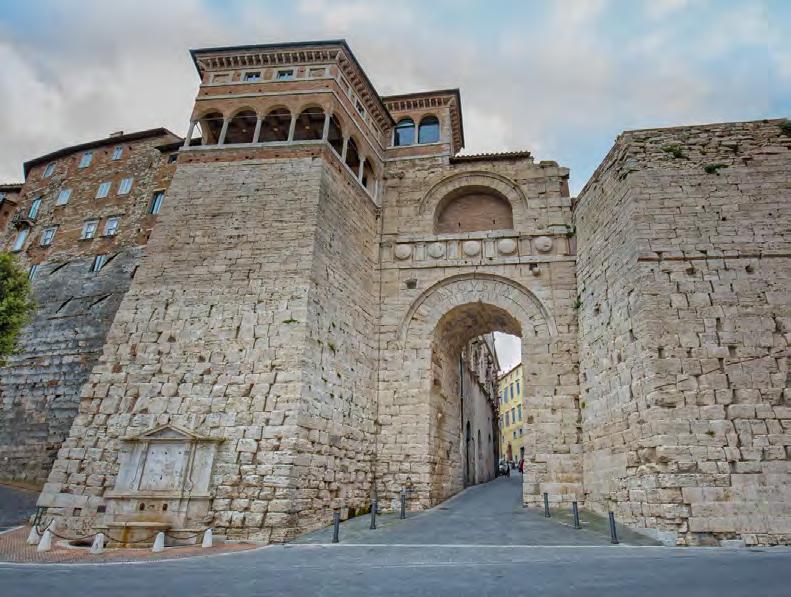
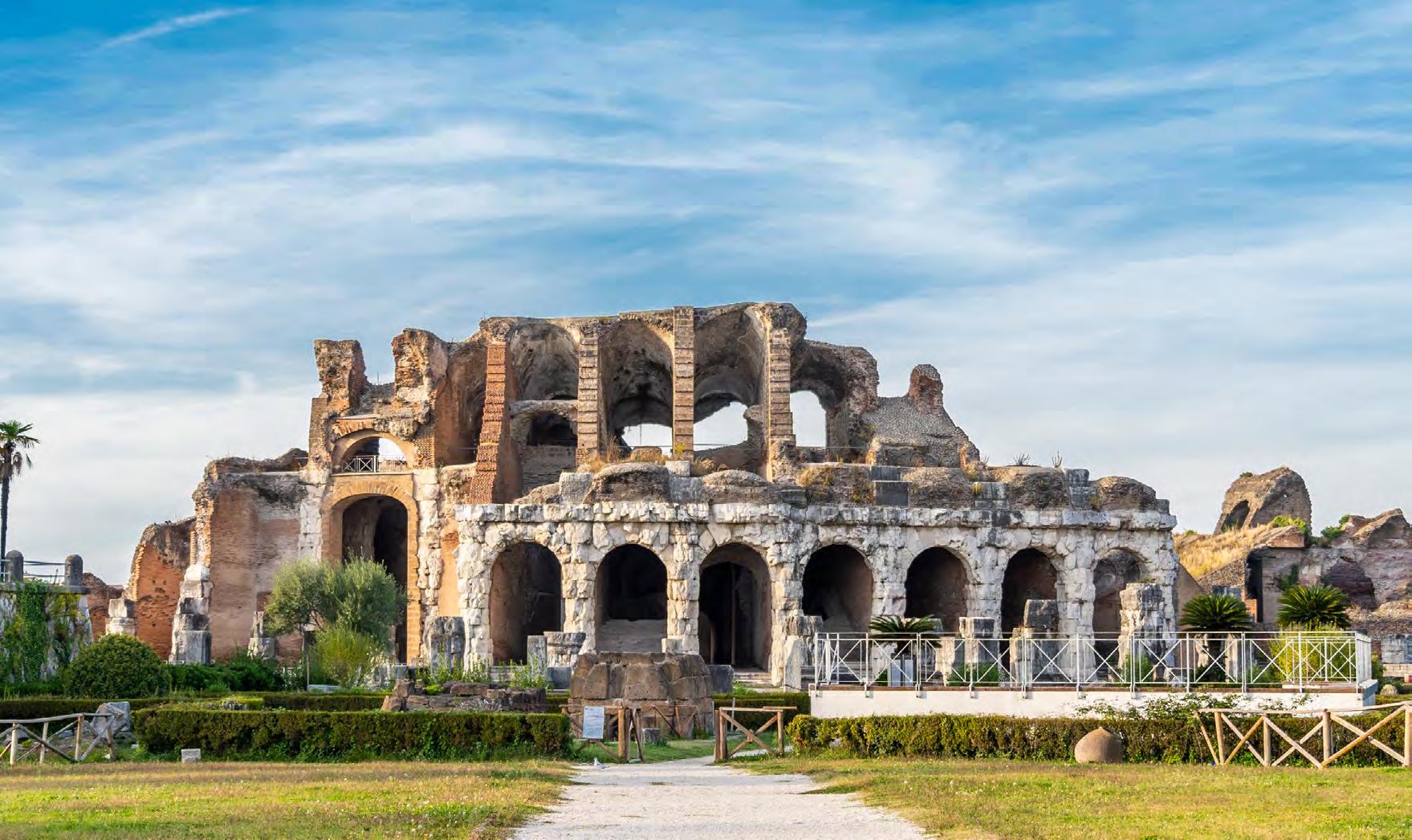
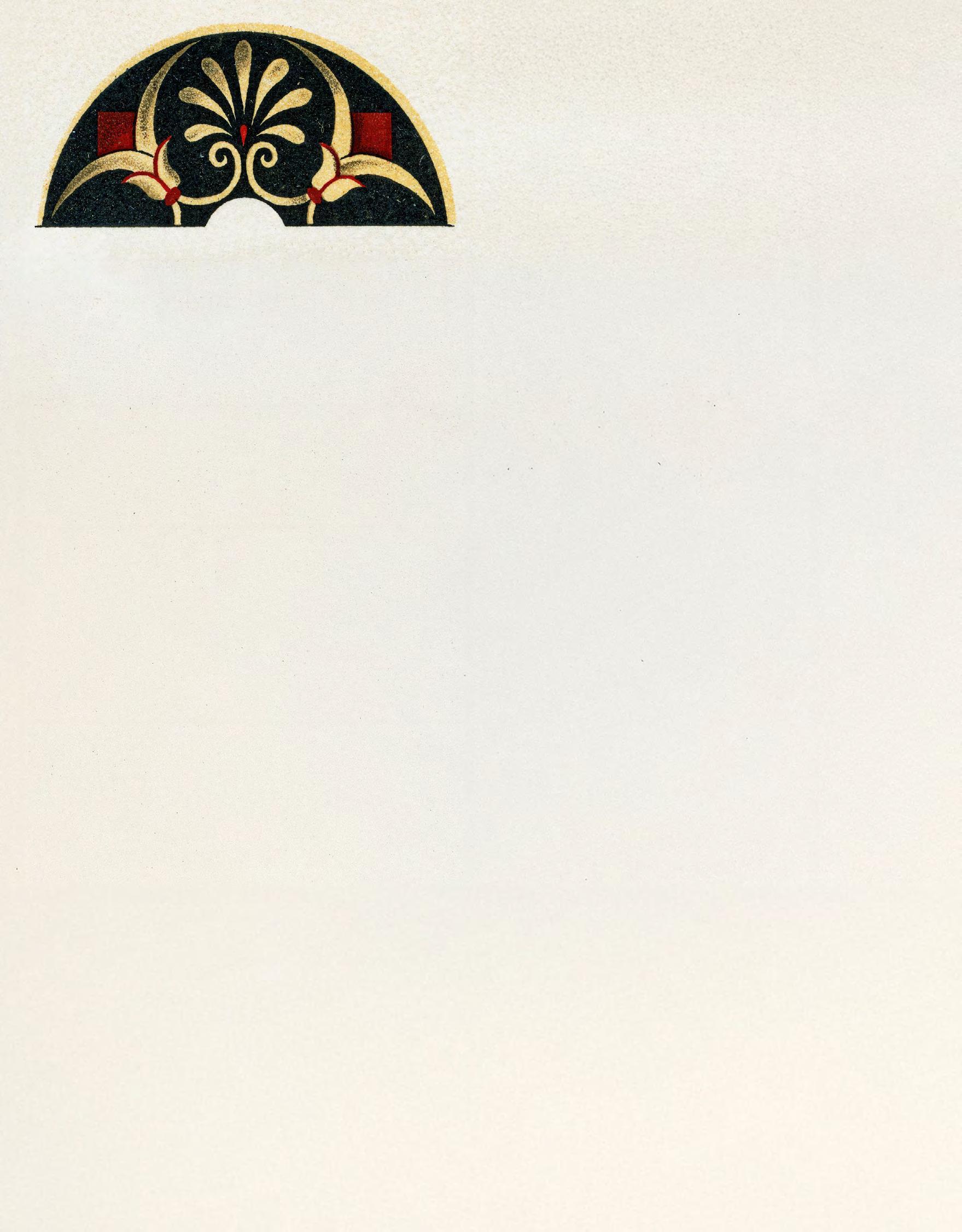
Etruscans were pre-eminent among all other ancient people for their pioneering dental work and appliances, including the production of crowns and bridges, as well as dentures which were fashioned either from recycled teeth, bone, ivory or gold. Their contribution to dentistry is being recognized more now as previous scholars had earlier been prone to attribute their work to either Greeks or Egyptians.
Famed for their goldsmithing, it was Etruscan craftsmen rather than dentists who created dental appliances. What is anomalous about the dental appliances we have is that they seem to have been almost exclusively created for women, as can be seen by their size; in addition, many of the women seem to have had their teeth ablated or removed for aesthetic or ritual purposes. Question marks remain about whether the dental appliances were sturdy enough to be practical or whether they were produced for cosmetic reasons. The influence Etruscans had on Romans can be gauged by the fact that the 12 Tables, Rome’s earliest legal document, mentions expensive dental work, stipulating that they needn’t be seen as ostentatious spending.
Without even knowing it, there are a number of words common in everyday parlance which derive from Etruscan, and which arrive to us courtesy of Latin. These include the word satellite, from the Etruscan satnal, meaning someone who follows you around. We know the word phersu from a fresco from Tarquinia, which represents a masked character; Romans adopted this word for person. There are a series of architecture terms which appear to have derived from Etruscan, such as fenestra, the Latin word for window from which we get defenestration, and which originates from the Etruscan fnes. There is another series of Latin words which don’t have Indo European roots, suggesting that they derive from Etruscan, the only non-Indo-European culture which exerted a significant influence over them. The word market, for instance, which originates from the Latin mercatus, doesn’t have Indo European roots and should derive from an unknown Etruscan word. It is typical that our appreciation of Etruscan culture is underappreciated because it is overshadowed by Roman influence; we unwittingly utter Etruscan words all the time but just attribute them to Rome.
From Roman writers, we have many references to Etruscan literature, typically books to do with religious rites known as Disciplina Etrusca. There were also a number of ancient works about Etruscans, notably the Tyrrhenika, written by the emperor Claudius. Yet nothing survives because the language was already largely dead by the 1st century BCE. What is worse, the 13,000 surviving Etruscan inscriptions, of which several are extensive (notably the liber Linteus Zagrabiensis), are poorly understood because the language isn’t Indo European; indeed Etruscan, despite being easily read because it is written in a version of the Greek alphabet, won’t ever been translated, despite bi lingual inscriptions such as the Pyrgi Tablets, because (unlike Egyptian) there isn’t a modern parallel to the language.
Although the origins of gladiators are much debated, there is no doubt that Romans inherited the games from Italians. Some of the characters involved in the spectacles have clear Etruscan origin, including the Charon who was responsible for putting dying gladiators out of their misery by striking them with a hammer (Charun was the Etruscan god of the underworld). Etruscans were also known to have honoured the deceased by having their slaves fight each other to death. This is a practice which Rome first adopted in 264 BCE when 3 pairs of gladiators fought at Decimus Junius Brutus Pera’s funeral.

One of the things which ancient Italians have given us is a series of villains, all of which are miscreants because they were enemies when Rome was establishing itself as a republic and a dominant force in Italy. The most famous of these is Tarquinius Superbus, the last of the Etruscan kings, expelled from Rome in 509 BCE for his tyrannical behaviour. While he was important for building the Cloaca Maxima, Temple to Capitoline Jupiter and for acquiring the Sibylline books, we remember him for his murdering his brother and his father-in-law/predecessor along with his horrific wife Tullia whose despicable act of driving her chariot over her father’s corpse was commemorated by the vicus scleratus (wicked street). Even more famous is the evil Sextus Tarquinius, Superbus’ son, whose rape of the virtuous Lucretia sparked the overthrow of the monarchy and inspired artists throughout European history. Lars Porsenna, the King of Clusium, is in turn famous as the villain who wanted to conquer Rome and who was thwarted by a succession of Roman heroes such as Mucius Scaevola and Horatius Cocles immortalized by Macaulay’s poem.

While Rome is often credited with the development of portraiture, it is their Etruscan counterparts who first developed the art. As seen on many of their tombs, Etruscans were often careful to depict people realistically, representing men with paunches and both genders with blemishes and wrinkles. One need only think of the scantily clad men reclining on the lids of sarcophagi exposing their pot bellies or of the incredible sarcophagus lid representing an elderly couple at the Guarnacci museum in Volterra. It is clear from these and from other tombs such as the exquisite tombs of two Seianti women from Chiusi that it was important for the dead to be commemorated as they appeared because that would allow them to be immortalised. At the essence of portraiture is the concept that one’s visage captures his personality, one’s persona, as can be seen by the inscription from the 3rd century tomb of Scipio Barbatus which states that his appearance matched his virtue. It is for this reason that a mask can be seen to equate to a person, something noticeable by the fact that the Etruscan world phersu meant both mask and person. This desire to capture a person through his likeness is what gave rise to the 4th century BCE youth of Fiesole or the famous Orator, the 2nd century BCE bronze togate statue depicting Aule Meteli.

Essential Etruscans
Departing on: 1st March 2026
Archaeology in the Heart of Italy
Departing on: 13th April 2026
Cities on the Po
Departing on: 8th June 2026
Etruscan Italy
Departing on: 21st September 2026
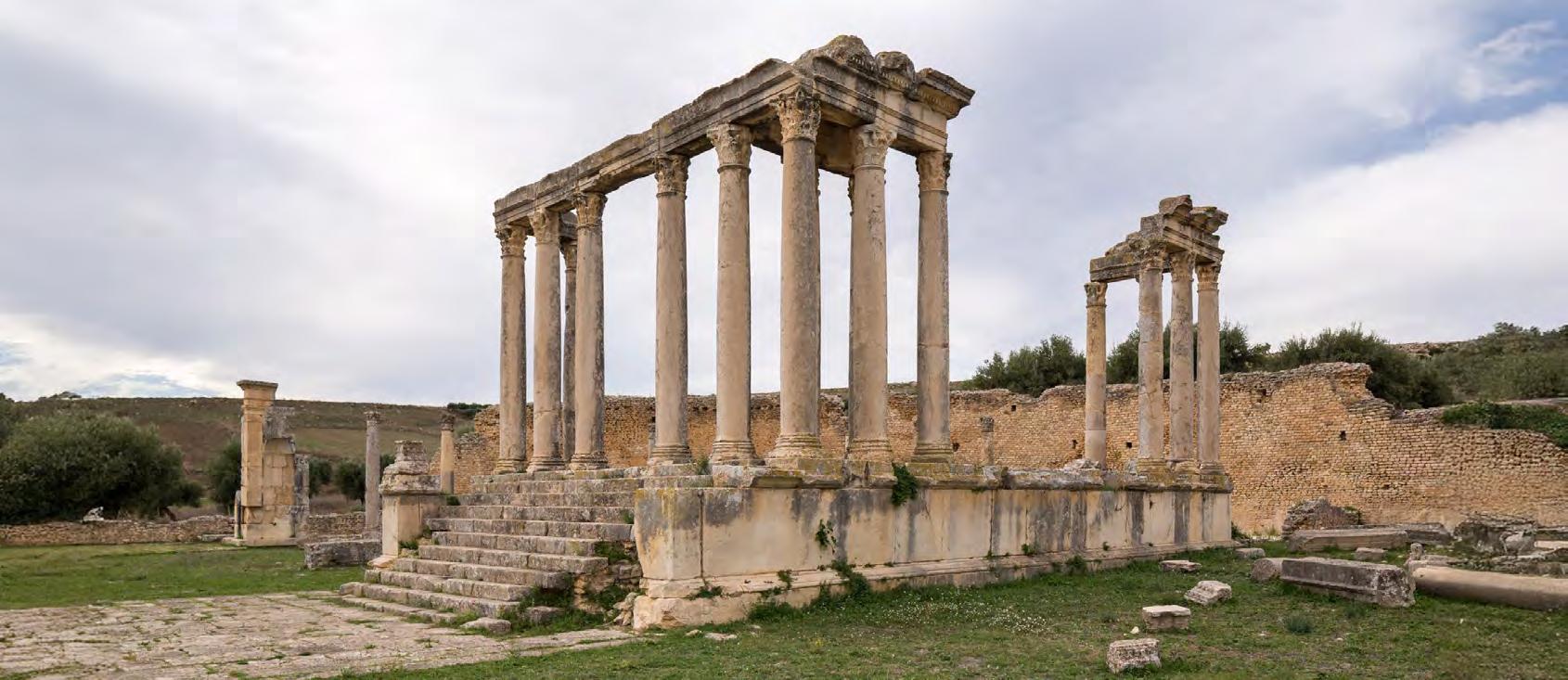
Where did you go first go on holiday without your family/parents?
My (Mike) first holiday was with student friends driving down through France to spend a couple of weeks in a series of campsites near the holiday beaches south of Barcelona as far as Tarragona.
What led to your interest in archaeology?
Whilst making our way down the Spanish coast we drove past the “Pont del Diable” (Devils Bridge) near Tarragona, and I was immediately hooked by both the scale and technological achievement of building such an impressive aqueduct. So much so that even though I was studying Applied Maths at University it made me want to do something more practical and to develop a career in “Big Project” engineering, something I succeeded in achieving with an International Oil Company. Which time period or ancient civilisation fascinates you the most?
It has to be the Romans, the more I’ve seen of their legacy in both Europe and North Africa I’ve never ceased to be amazed by what they achieved, often constructing major infrastructure that we would find far from easy to replicate today, even with the help of our modern tools and construction materials. Not only did they develop building techniques to overcome many natural challenges but also found time to make their work decorative with carvings and mosaics, something I believe not really replicated until the Victorians and their drive to make even sewage pumping stations attractive with ornate ironworks.
“I love looking at, and photographing, the unusual...”
Can you name a site that lived up to the hype?
One of the best sites we’ve visited is Dougga in Tunisia. It’s an incredibly complete site with numerous temples, an expansive theatre, exceptional mosaics both on site and those relocated for preservation, plus one of the bestpreserved Roman latrines to be seen anywhere! (a fun location for a group photo).
Can you remember a site that failed to live up the hype?
Our trip to Capri in the Bay of Naples after a somewhat rough crossing on the ferry seemed at the time disappointing, possibly because it competes with nearby sites of Pompeii and Herculaneum, but from my perspective it doesn’t seem to have a lot of history, it’s too touristy and full of designer shops. Even the slog up the hill to Villa Jovis, Emperor Tiberius’s retreat, was a hard climb but I must admit the view from the cliff edge, “Tiberius’s Leap” is nevertheless pretty impressive.
Who is the most interesting historical figure you have discovered on your travels?
Visiting Florence allows a visit to, and climb up, the Duomo’s magnificent crowning glory, Brunelleschi’s Dome. It was in its day, indeed it still is today, an unbelievable engineering feat, created without scaffolding, bears its own weight without buttressing and it’s still not really understood how it was designed, indeed how it has managed to stay up for so long. Brunelleschi’s equally well known for his sculpture and his ground breaking work on linear perspective, how views change in shape when seen from a distance.
Do you have a favourite item you always take with you when you travel?
I always take my camera, it was a 35mm Canon but I’ve now given up on the weight and complexity and use a much smaller and lighter Lumix. I love wandering off, probably causing annoyance to some of my guides, to take photographs. I love looking at, and photographing, the unusual, the views and perspectives not found on the main pages of the travel guides.

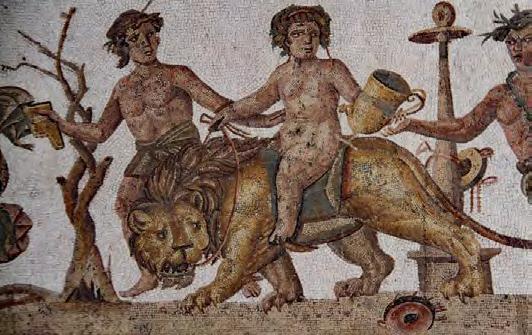
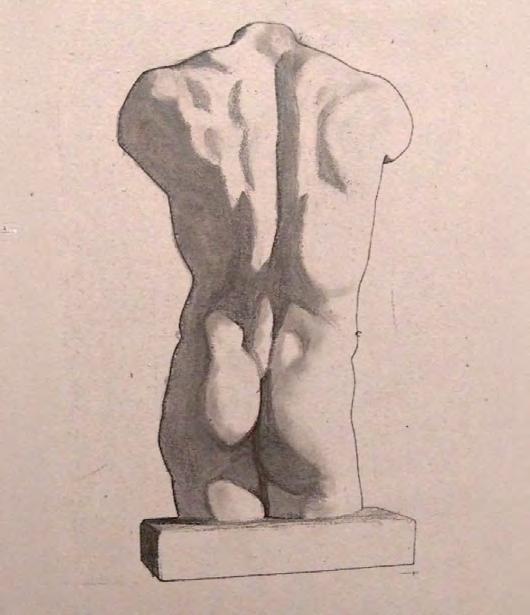
Can you tell us about one of your most memorable travel experiences?
It’s difficult to select a single highlight, New Year in Venice, Hidden Rome but our Art in Florence trip was special because it opened new perspectives. We spent an afternoon in an artist’s studio creating a sketch based on the well-muscled back view of a statue. It pushed me, and I would guess most of us on the tour, totally out of our comfort zones with most being pleasantly surprised by our efforts. In combination with a visit to the City of Florence Restoration Workshop where we watched laser cleaning of the original baptistry door resulted in afternoon very different from the norm.
Where are you travelling to next?
Our next trip is “Cities of the Po”. We’re looking forward to staying in and spending more time in Bologna but also visiting other cities that had their moment in the sunlight in the Po Valley.
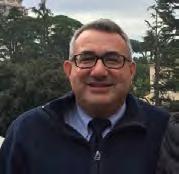
Who are some of your academic or art historical heroes?
I have a number of heroes, both alive and dead. We would be nowhere without Ernst Gombrich and his ability to encapsulate ideas of art history in an accessible way. Likewise, we are all indebted to Erwin Panofsky and his groundbreaking idea that everything in a painting has meaning that goes beyond the immediately apparent. In a religious painting, for example, a piece of bread becomes a reference to the Eucharist. In a more personal way, I was also hugely inspired by my first professor of art history in Carlton College, Alison Kettering, who kept us on our toes with her lively descriptions (referring to Bosch’s elongated limbs as ‘Taffy Apple Limbs’) and with a water pistol she would use on sleepy students. Lastly, I really admire my dear friend Clare Ford-Wille who is so able to share her enormous knowledge of all things art historical and to offer an analysis and architecture.
What are some of your favourite sites and/or museums and why?
One of my favourite museums is the Kunsthistoriche Museum in Vienna best known for its Habsburg collection of paintings from all over Europe, from the Renaissance to the 19th century. It also has wonderful Egyptian and Roman collections, as well as the Kunstkammer – ‘cabinets of curiosity’ housing diverse objects of nature, art, and science. What is extraordinary is that you can often be alone in these galleries –even on a more crowded day. In contrast, the Rijksmuseum exhibits art that is almost entirely produced by one country: the best of the best of Dutch art. The world-famous so-called Gallery of Honour defines Dutchness and ends with Rembrandt’s Night Watch. The collection is a means of creating identity, which is something that art can do.
The Staatliche Kuntsammlungen in Dresden is another wonderful museum perhaps most famous for the Old Masters’ Picture Gallery. However, I particularly love the recently restored Green Vaults which bring together the treasures of the Princes of Saxony with gold, enamel, exquisite dainty silver work which are so overwhelming in beauty and material that we are transported to a world which no longer exists. It is hard to put into words a collection, which is so beautiful that it places us into the sublime.
Lastly, the historical city of Gdansk, which has been beautifully restored, contains an extraordinary museum called the European Solidarity Centre, which powerfully defines what it is to be Polish. It is housed in a new building which looks like a ship and is located in the former shipyard, where solidarity developed. The artefacts that are exhibited, including the bloodied jacket of one of the young men instrumental in establishing Solidarity, exude the heroism of Polish resistance.
Which little known artistic or historical site should be better known in your opinion?
One of the museums is the little known Voorlinden in Wassenaar, which houses modern and contemporary Dutch art, including Van Gogh. It is presented in an extraordinary setting, with sand dunes, water and light. Another collection which deserves to be much better known is the Museum of Fine Art in Leipzig, housed in an incredibly spacious building and which contains iconic Caspar David Friedrich paintings, as well as Max Klinger’s famous statue of Beethoven as Prometheus. There are so few people that you can walk right up to the sculpture. What these museums demonstrate is that art is created for a space. When, for example, you look at Titian’s wonderful Assumption in the Frari in Venice, the red of the painting is mirrored in red of the brick walls which surround it. When art is removed from its original space, it’s important to consider where is ultimately displayed.
What are some of the challenges facing historical sites today?
I think one of the biggest challenges is climate change, whether archaeological sites or in garden sites like Potsdam. Something that is perhaps overlooked is the difficulty of maintaining historic gardens and landscapes that were produced for a cooler climate. Increased heat facilitates very rapid growth in grass, hedges and trees, as well as topiary, meaning more gardeners need to be hired. The warming in the summer is also contributing to the growth of fungi which are detrimental to the plants. Climate challenge is also a challenge to older museum buildings with the need to maintain constant temperatures. A second situation which is being investigated currently is the difficulty presented by over tourism. While overtourism can have some positive financial angles, it hampers the enjoyment of sites. More importantly, the increase in number of tourists poses logistical problems with museums and also with the super structures of cities.
What are some of the best and worst moments in your guiding career?
The worst moment in my guiding career was something that no one could anticipate. On the 11th of September, 2001, I was in the beautiful, truly sublime space of Weimar, Germany, with a very nice group of American citizens when the attack on the World Trade Towers occurred. There was nothing we could do and there were people who had family in New York.
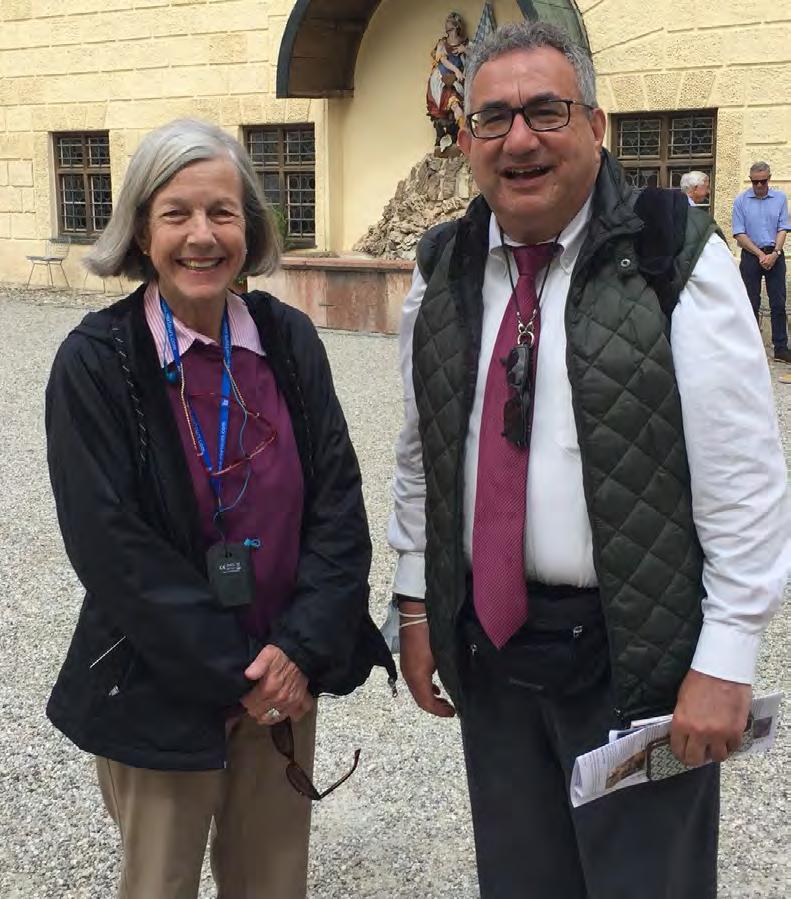
As for good moments, I could mention a whole raft of sublime visits such as visiting the Sistine Chapel in the morning before everyone else or having a private visit to the Basilica of San Marco in Venice. However, I would rather talk about the best part of guiding in general, which is when you have facilitated a programme which has, perhaps, changed the course of someone’s life. This could be introducing people to an artist they didn’t know or taking guests to the Holocaust and War memorial sites in Berlin. Showing guests the positive sides of countries which are sometimes disparaged is so satisfying. Another rewarding thing is to point out the effect of light on colours, objects or water, such as leaving Burano when the sun is setting and there is a red brilliance on the water. Or when you’re standing on the Riva of degli Schiavoni in Venice and point guests towards the Salute at sunset when the sun goes through the black frames of the interior windows, turning them red and making the dome look like it’s on fire. For that moment you have made a difference in someone’s life.
If you could invite any historical character (either fictional or real) to dinner, whom would you invite and what would you eat?
If I could take the rather evident turbulence, I would love dining with Vincent van Gogh. He had such a generosity of spirit towards everyone which we see in his portraits, like Madame Berceuse. In art, he was able to express, in a revolutionary way, the humanity of everything in the world and in everyone regardless of economic status. Perhaps this relates to his despondency as well, which resulted not only from the fact that no one bought his art but also because he had this extraordinary spirit of generosity which he could only express through his art. I think this is why I would like to meet him – maybe on one of his better days! I would like to dine with Vincent maybe also to reassure him and tell him that we love his paintings.
Vienna Departing on:- 3rd December 2025 | 2nd December 2026
Amsterdam, Haarlem & The Hague
Departing on:27th March 2026
Treasures of Saxony
Departing on:19th June 2026
Warsaw to Danzig
Departing on:24th August 2026
Given the amount of money at least some of them had, it is hardly surprising that Romans spent fortunes on their appearance in particular on their hair. A quick run through a museum is enough to tell us that Roman women were adorned with extraordinary hairstyles, which changed every generation, forcing women to keep up with the latest fashions. These intricate coiffures affirmed women’s wealth as they were so complicated they required slaves to do them. Rather than using Kirby grips or bobby pins, Roman tresses were sewn together with thread. What is more singular is their use of wigs, either to compensate for thin hair or hair which was damaged through overgrooming, a practice the poet Ovid complains about. While ordinary women had wigs made out of cloth, those used by elite women were either imported or taken from women captured in war. We know from writers that blonde hair from Gaul and that black hair from India were particularly prized. Some of the hairdos, particularly those adopted by Trajan’s relations, were so contrived that buns or toupees must have been used; these were either sewn into hair or glued onto it. It also seems that some buns were applied hair in order to stop pomades, dyes and glues from dripping onto faces. While some writers rail against the use of artificial hair, women clearly were proud to wear wigs; we can see this from statues which purposely display wigs. Some statues even have detachable toupees made of different coloured stone. Romans were equally vain about their eyebrows: even men wore false ones and women either applied kohl or goat hair in order to give themselves unibrows.

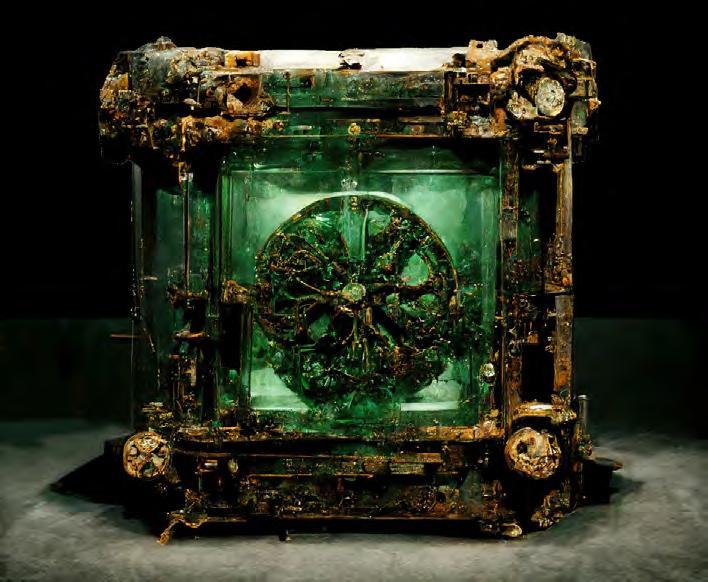
As we seem to be living in a world which is increasingly dominated by AI, you would be forgiven for thinking that computing is ultra-modern. It might be surprising to know that the first known analogue computer was built in 100 BCE, perhaps in Rhodes by someone working in the school of the Stoic philosopher, Posidonius. Found in a shipwreck off of Antikythera between the Peloponnese and Crete, it is the size of a book and had a front face dominated by an image of the earth surrounded by movable representations of the moon and the five known planets; an outer fixed ring listed the 12 signs of the zodiac and this was surrounded by rotatable ring listing the names of the Egyptian months. In an astonishing discovery made only several years ago, the face had detailed instructions outlining how to use the mechanism. On the back there are a series of spiral rings with central pointers including one which comprises the 19-year metonic cycle (the basis of ancient calendars), another ring which outlined the four-year Olympic cycle, and finally a ring with an eclipse predictor. The rings are moved by a complex series of precision gears made of teeth one millimetre long which were wound by a, now lost, handle. These calculated orbits of planets and stars allow one to estimate the position of the sun and moon in years to come and predict an eclipse. The mechanism is so complicated that it is hard to know what it was used for. Some estimate that it could have been used as a toy used to calculate astronomical theories, while others theorise that it could have been used to calculate horoscopes. What the Antikythera mechanism shows us is that Greeks were able to put their complex theories into action and that technology is a lot older than we thought.
Venice was such an economic powerhouse that its coinage was used throughout Europe. From 1284, it began minting a small gold coin whose obverse invariably showed their patron saint, St Mark, receiving a banner from the current doge and whose reverse depicted Christ surrounded by a mandorla. Although it was initially called a ducat, from the 16th century, it was called a zecchino after the Venetian mint, the zecca, so named from the Arabic work sikkah meaning coin die. The quality of the coin’s design, together with its consistent design and its high 24 carat gold content made it so successful that it was used throughout Europe. In the Muslim world, it was so important that its standard was adopted for their coinage. The French referred to the zecchino as a sequin and it is from them that the English adopted the word. In 1852, long after the coin’s demise, the word sequin appeared in a French fashion magazine to describe ornamental gold disks that were applied to dresses and hair coverings from the East; presumably, they used the word sequin because of their resemblance to the Venetian coins. It wasn’t long before it was adopted into the English language. In this way, a little bit of Venetian history lives on.
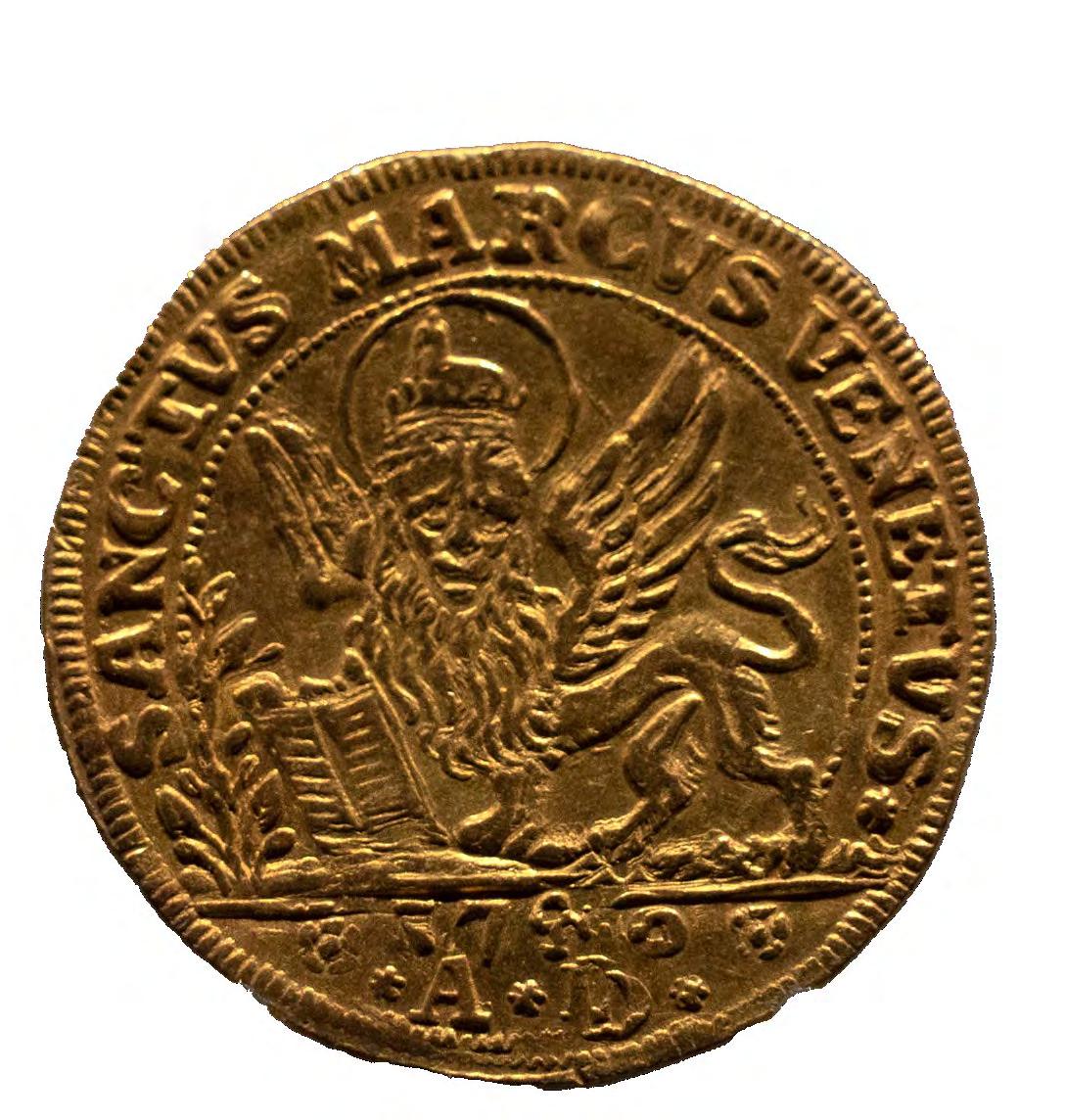
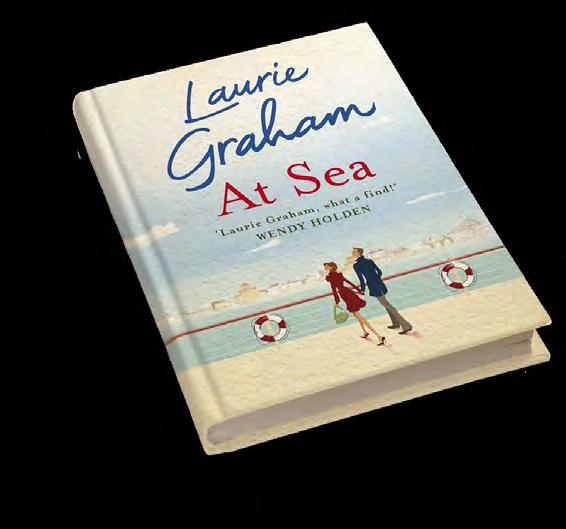
AUTHOR: LAURIE GRAHAM | Chosen by Mary Reynolds

If, like me, you delight not only in the monuments and landscapes we explore on tour, but also in the stories and personalities that animate them, Laurie Graham’s At Sea is a quiet, comedic gem.
The novel follows Enid Finch, a 55-year-old veteran of a long and loveless marriage to Bernard, a celebrated lecturer on Aegean cruises. Enid, dutiful and overlooked, spends her days smoothing his path and shepherding his audiences, until a Mediterranean sailing unsettles the careful order of their lives. A fellow passenger appears to know Bernard from a past he would rather keep hidden, and the voyage begins to unravel with both comic and poignant consequences.
What makes At Sea so engaging is Graham’s deft ear for detail and her finely tuned sense of humour. She makes us laugh at the ridiculous pretensions of Bernard’s academic authority while quietly guiding us to admire Enid’s growing independence. In Enid’s gradual awakening we find not only just humour but a sharp, humane reflection on identity, compromise, and the possibilities of change later in life. Her eye for the absurdities of organized tourism is sharp without being cruel, and she captures the genuine connections that can form on a tour with warmth and authenticity.
I’m a great fan of comic travel writing from Jerome K. Jerome's bumbling Thames adventure and Mark Twain’s blithe European journey to Terry Pratchett’s adventurous witches and Bill Bryson's laugh out loud personal observations. Like them, Laurie Graham understands that the most effective travel comedy comes not from mocking the journey but from recognizing the fundamental humanity of all fellow travellers, however misguided their itineraries might appear.
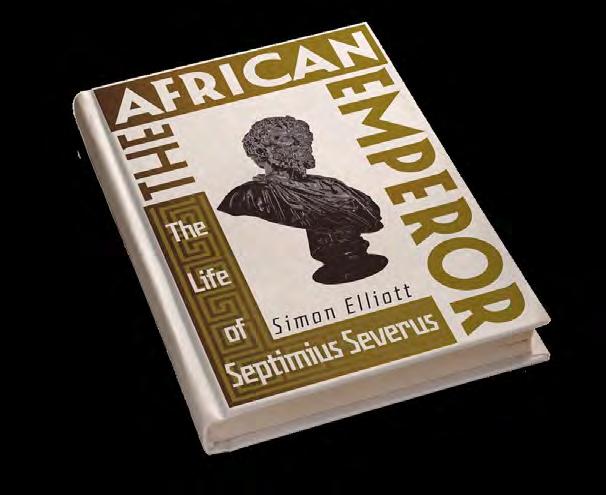
AUTHOR: DR. SIMON ELLIOTT | Chosen by Dr. Eireann Marshall
In The African Emperor, award-winning historian Dr. Simon Elliot brings one of Rome’s most formidable and often under-appreciated rulers into the foreground. Septimius Severus, born in the fabulous North African city, Leptis Magna, is often remembered for his military campaigns and the dynastic squabbles that followed his reign. Elliot insists, however, that we view the emperor through a different lens: as Rome’s first African emperor, whose identity was not merely incidental but central to the way he ruled and to the legacy he carved across the Empire.
Elliot uses charming insights into the emperor’s character to emphasise his strong attachment to his homeland: for example, his distinctive Punic accent. By highlighting his material legacy, particularly projects such as the spectacular Septizodium, Elliot argues that Severus’ North African roots were the foundation of his public image.
What makes this book so compelling is Elliot’s storytelling craft: he plunges the reader into the chaos of the late second century with incredible detail, weaving set-pieces that feel almost novelistic; whether it’s the bloody Year of the Five Emperors; or the mud-choked campaign trails of northern Britain. These moments transform the emperor into a flesh-and-blood figure, one we can almost hear issuing to his sons that famous piece of deathbed advice: “Be harmonious, enrich the soldiers, and scorn all other men.”

Chosen by Mary Reynolds
The podcasting world offers an incredible range of topics and formats. You can find podcasts that explore broad narratives like the fall of empires or focus on niche subjects like Hollywood's golden age or the history of a specific battle. This diversity caters to a wide array of interests, ensuring there's a show for almost any historical curiosity. Created and hosted by writer and broadcaster Paul Cooper, The Fall of Civilizations explores the decline and collapse of societies across time. The episodes are infrequent with just 2 or 3 yearly releases, but they are long form narratives, often more than three hours long, and usually recorded in one take. Carefully researched and woven together from historical sources, archaeological findings and contemporary academic opinion, episodes include the Khmer, ancient Sumerians, Nabateans and Phoenicians.
The podcasts are very much in the immersive storytelling vein. Cooper says: “Oral storytelling is the most ancient form. Our most ancient stories, like ‘The Epic of Gilgamesh’, ‘The Odyssey’, the ‘Mahabharata’, all derive from stories that began before the invention of writing. They were memorised and read by heart, changing with each telling. Podcasting has brought oral storytelling into the digital world – and it’s just as popular today as it was in the time of Homer.” Listeners are guided through landscapes both physical and historical and the narrative is enjoyably moody and melancholy. With the use of atmospheric sound design with a light touch of music, poetry and sound effects, you are transported directly into the narrative. Whether describing the slow silting-up of Mesopotamian rivers, the lost grandeur of Angkor, or the haunting ruins of Easter Island, places are vividly summoned to mind. For those lucky enough to have walked among the ruins, rested in the shadow of toppled columns, or traced the outlines of vanished cities, The Fall of Civilizations provides a powerful reminder of lives once lived. fallofcivilizationspodcast.com
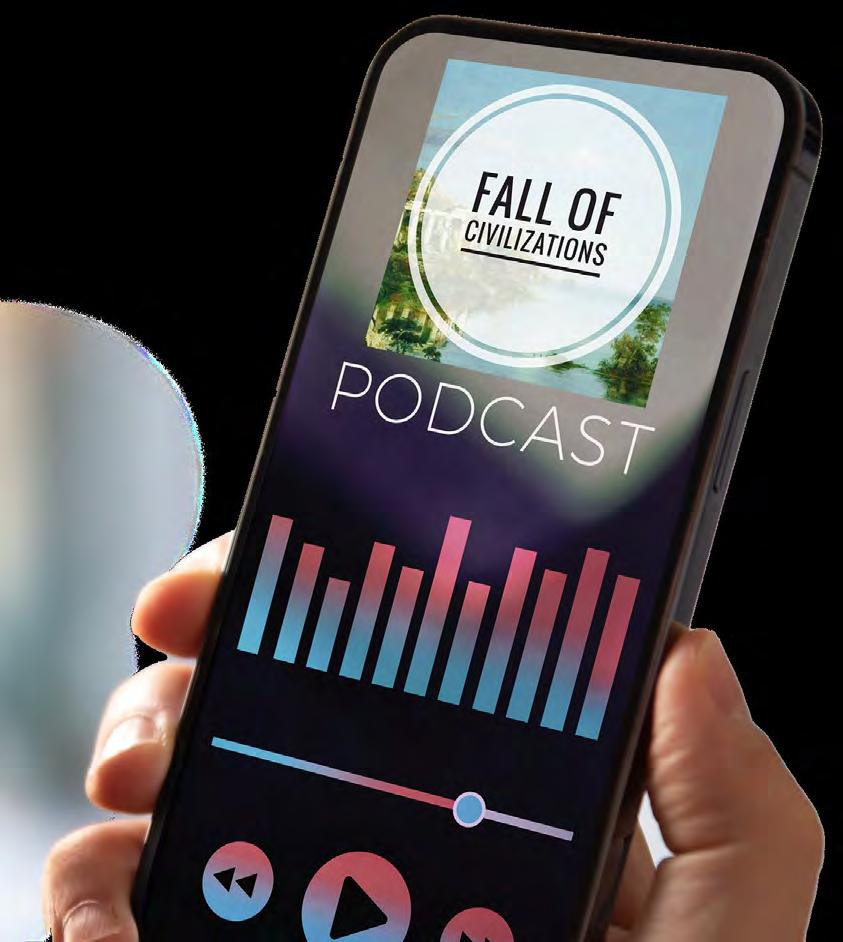
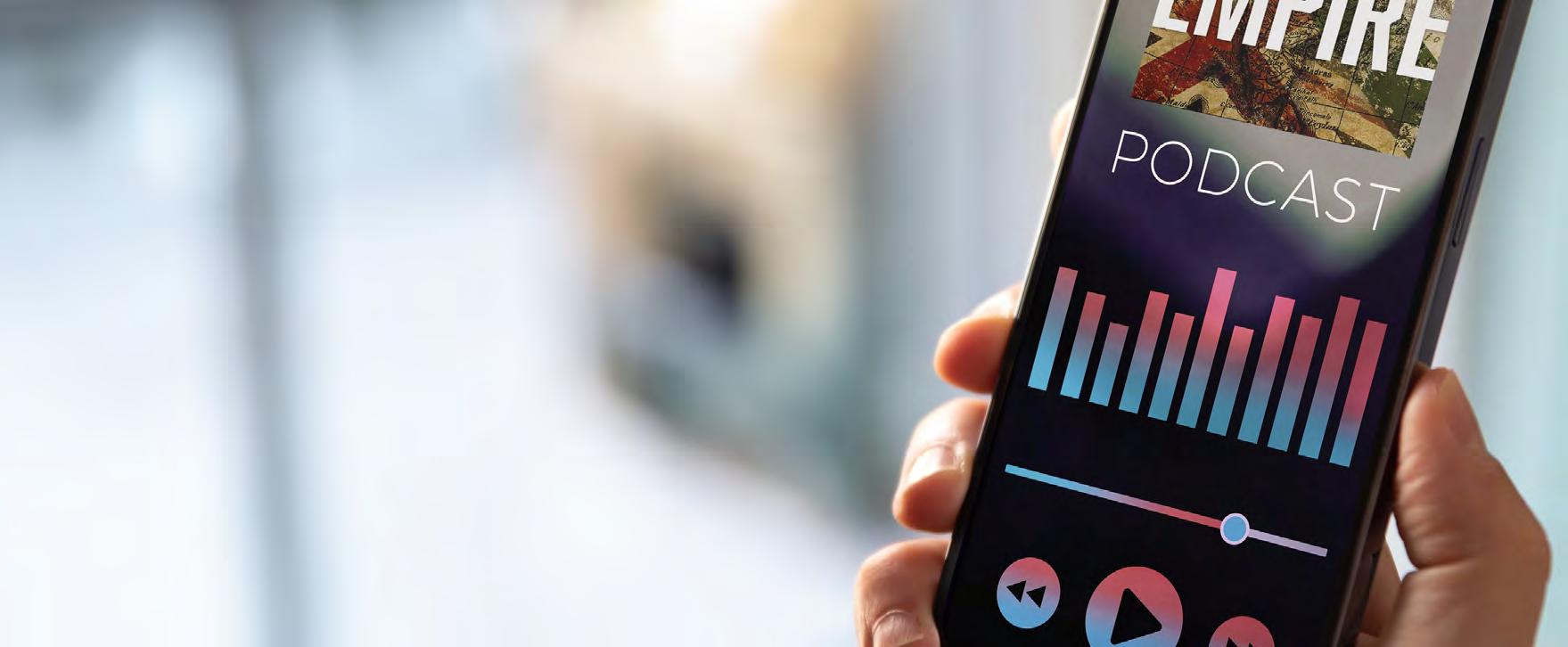



As the pioneering British specialist on in-depth archaeological travels, join us to unearth history's treasures. Venturing beyond mere cultural excursions, we craft extraordinary journeys, granting you access to the world's most significant historical sites. With 24-hour support from our dedicated team and meticulously planned itineraries, you can rely on Andante Travels for an unparalleled odyssey into antiquity.
In the latest edition of our 2026 brochure and on our website you will find journeys exploring almost every corner of the ancient world and there are some tremendous experiences on offer.
Join us and discover why our very personal approach to something we feel so passionately about has made Andante Travels so special over the years.
Small groups with big insight - travel in a group of no more than 18, giving you deeper access to sites, stories and experts
Experience matters - with over 40 years of curating and innovating truly exceptional tours, you can be certain your experience will be something extraordinary
We uncover history, layer by layer - we make sure you're not rushed and have plenty of time at each site
Led by experts - guided by archaeologists, Egyptologists and historians, all specialists in their field
Tour Managers accompany most tours - allowing our Guide Lecturers to concentrate on what matters most... delivering extraordinary, expert-led discovery
Chosen by travellers, celebrated by the experts - we’re honoured to be 2025 nominees for the Condé Nast Traveller Awards, British Travel Awards, and Wanderlust Readers’ Travel Awards
Every itinerary tells a story - our tours are carefully curated to follow an archaeological theme, designed by experts to bring deeper meaning and context to every site you visit
Expert travel with exceptional value - all local transport, meals and gratuities are taken care ofeven wine with dinner on most tours
Because you matter - we never treat you like a number. No name badges, no umbrellas in the air - just genuine connection and intelligent conversation
Expert service - our team are on hand to support, before, during and after your tour
Trusted by guests, recognised for excellence - we have been rated ‘Exceptional’ with over 2,100 reviews and are winners of Feefo’s 2025 Platinum Trusted Service Award


